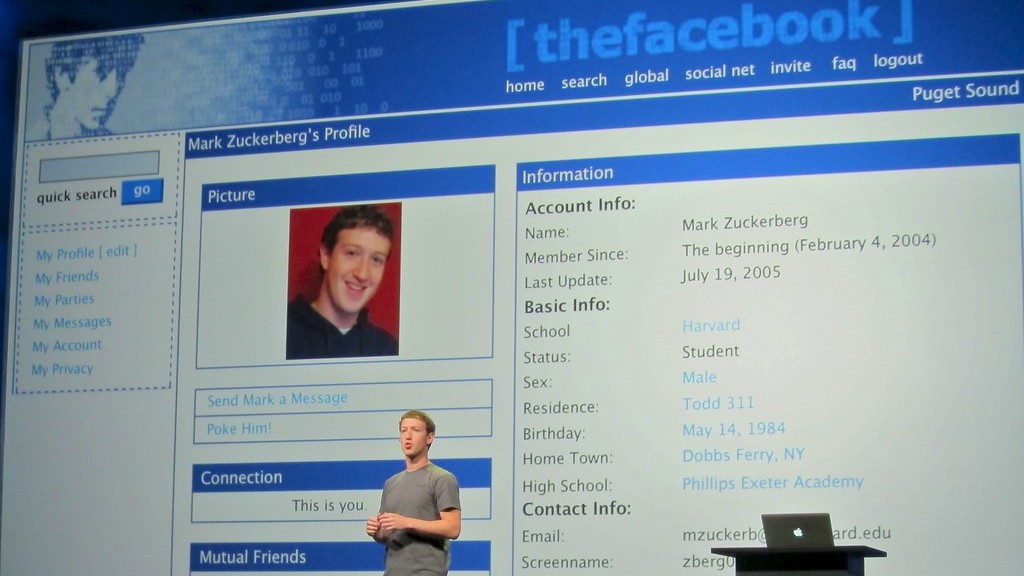Are you thinking about hiring a Facebook marketing firm to help grow your business? Here’s what you should look for in a Facebook marketing audit:
1. Review their current Facebook page. Does it have a strong following? What kind of content is being posted?
2. Take a look at their past campaigns. Were they successful? What kind of results did they achieve?
3. Ask to see some examples of their work. Do their methods align with your goals?
4. Discuss your budget and what you’re hoping to achieve. Make sure you’re on the same page before moving forward.
There are a few key things to look for when conducting a Facebook marketing audit. First, you’ll want to take a close look at your Facebook page Insights to see how your page is performing. This includes things like your page views, post reach, and engagement.
Second, you’ll want to analyze your Facebook ads to see if they are effective. This includes looking at your click-through rate (CTR), conversion rate, and cost per click (CPC).
Third, you’ll want to review your Facebook content to see if it is engaging and relevant to your target audience. This includes looking at the type of content you are posting, when you are posting it, and how often you are posting.
Finally, you’ll want to consider your overall social media strategy to see if Facebook is the best platform for you to be utilizing. This includes looking at your other social media channels, your website, and your marketing goals.
What should a Facebook audit include?
1. Facebook profile and branding audit
Profile completion:
The very first step of the audit is to look at your profile page as a visitor. Check to see if your profile is complete and if there is a call-to-action (CTA) button. Links and custom username should also be checked for SEO purposes.
Cover photo and profile photo:
Your cover photo and profile photo are important for branding purposes. Make sure they are high quality and represent your brand well.
Customer service:
Your profile should be set up in a way that allows customers to easily get in touch with you. Provide clear and concise customer service information.
Overall color and feel:
The overall color and feel of your profile should match your brand identity. Keep this in mind when choosing photos and colors for your profile.
Image sizing and optimization:
Images are an important part of your profile. Make sure they are the correct size and are optimized for fast loading.
Facebook Ads is a powerful tool to help you reach and engage your target audience. Here are 9 ways to analyze your Facebook Ads to ensure you are getting the most out of your investment:
1. Monitor reach and impressions.
2. Evaluate your engagement rate.
3. Track Facebook social media referrals.
4. Calculate the click-through rate.
5. Measure your bounce rates.
6. Calculate your Return on Ad Spend (ROAS).
7. Measure conversion rates.
8. Calculate CPC and CPM.
By monitoring these key metrics, you can optimize your Facebook Ads to achieve your marketing goals.
A social media audit can be a valuable tool for businesses to assess the effectiveness of their social media presence. By analyzing data such as impressions, comments, likes, shares, and other interactions, businesses can get a better idea of which posts are resonating with their audience and which are falling flat. Additionally, a social media audit can help businesses to identify which audience segments are most engaged with their content, and what kinds of content are most likely to generate engagement. Armed with this information, businesses can make more informed decisions about how to best use social media to achieve their desired results.
Every successful Facebook ad has four key elements: a well-defined target audience, messaging that connects with that audience, eye-catching visuals, and measurable goals.
Defining your target audience is critical to the success of your ad. You need to know who you’re trying to reach and what they’re interested in. Once you have a good understanding of your target audience, you can craft messaging that resonates with them.
Your ad should have visuals that are eye-catching and relevant to your messaging. People are more likely to engage with an ad that has compelling visuals.
Finally, you need to set measurable goals for your ad. What are you trying to achieve? How will you know if you’re successful? By setting clear goals, you can track the performance of your ad and make necessary adjustments to ensure it is successful.
What are the 5 C’s of audit?
The 5 C’s of Internal Audit are criteria, condition, cause, consequence, and corrective action. Internal audit reports often outline these five elements in order to provide a clear understanding of the findings and recommendations.
The five elements of a finding are:
1. Condition: What is the problem/issue? What is happening?
2. Cause: Why did the condition happen?
3. Criteria: How do we, as auditors, know this is a problem? What should be?
4. Effect: Why does this condition matter? What is the impact?
5. Recommendation: How do we solve the condition?
What is KPI for Facebook?
There are a few important KPIs that Facebook advertisers should track in order to gauge the success of their ad campaigns. Impressions, Reach, Engagement Rate, Video Engagement, Link Clicks, Click-Through-Rate (CTR), and Cost-Per-Click (CPC) are all important metrics to take into consideration. By monitoring these KPIs, advertisers will be able to get a better understanding of how their target audience is interacting with their content.
As we move into 2023, there are 11 key Facebook metrics that businesses should keep track of to ensure success on the platform:
1. Engagement rate – this metric measures how engaging your content is with your audience and is a good indicator of how well your content is performing.
2. Reach – this metric measures how many people your content is reaching and is a good indicator of your overall visibility on the platform.
3. Impressions – this metric measures how many times your content is being seen and is a good indicator of your overall reach.
4. Followers growth – this metric measures how quickly your follower base is growing and is a good indicator of your overall success on the platform.
5. Click-Through Rate – this metric measures how often people are clicking on your content and is a good indicator of your content’s engagement rate.
6. Cost per Conversion – this metric measures how much it costs you to convert a user into a paying customer and is a good indicator of your overall success on the platform.
7. Cost per Thousand Impressions – this metric measures how much it costs you to reach 1,000 people with your content and is a good indicator of your overall
What KPIs will you use to analyze the FB ad performance
1. Cost per Click (CPC): This is the amount you pay for each click on your ad.
2. Click-Through-Rate (CTR): This is the percentage of people who click on your ad out of the total number of people who see it.
3. Cost Per Action (CPA): This is the amount you pay for each desired action (such as a sale or lead) that is generated from your ad.
4. Cost Per Mille (CPM): This is the amount you pay for each 1,000 impressions of your ad.
5. These are the most important metrics to track when measuring the success of your Facebook ads so you can optimize and improve your campaigns.
A social audit is an analysis of a company’s or organization’s compliance with social and ethical standards. A social audit may evaluate a number of different areas, including economic, political, environmental, health, and social factors. The social auditor should be able to identify and describe the key social and ethical issues facing the organization or company being audited.
The 5 Cs of Social Media — Coordinates, Channels, Content, Connections, and Corrections — are interconnected elements used to craft an effective strategy.
Coordinates are the starting point for any social media strategy. They include the who, what, where, and when of your target audience.
Channels are the platforms you use to reach your target audience. The most popular social media platforms are Facebook, Twitter, LinkedIn, and Instagram.
Content is the message you want to communicate to your target audience. The content you post on social media should be engaging, informative, and relevant to your audience.
Connections are the relationships you build with your target audience. These relationships are formed through the interactions you have with your audience on social media.
Corrections are the measures you take to fix any problems that occur with your social media strategy. Corrections can be made to your coordinates, channels, content, or connections.
The seven Cs of social media are content, community, conversation, capital (social), culture, collaboration, and conversion. These facets form the base for the world of social media.
Content is the foundation of social media. It is what users engage with and share with their networks. Community refers to the groups of people that form around shared interests. Conversation is the exchange of ideas and information between users. Capital (social) refers to the ability of users to build relationships and networks. Culture is the shared set of values and norms that govern social media interactions. Collaboration is the ability of users to work together to create content or solve problems. Conversion is the ability of social media to drive sales, leads, or other desired outcomes.
What are some common Facebook Advertising Mistakes
There are a few key Facebook advertising mistakes that many marketers make. These can lead to wasted spend and ultimately result in a less successful ad campaign.
Firstly, overlooking video as a marketing method. Videos are extremely engaging and can be a great way to reach your target audience.
Secondly, not being specific enough with targeting. It’s important to target your ads to a specific audience so that you don’t waste impressions on people who are not interested in your product or service.
Thirdly, failing to monitor ads consistently. It’s important to keep an eye on your ads to make sure they are performing well and to make adjustments as needed.
Fourthly, choosing the wrong type of ad for the intended action. There are a variety of ad types available on Facebook, so it’s important to choose the right one for your desired outcome.
Fifthly, testing too many things at once. When you are testing different elements of your ad, it’s important to do so one at a time so that you can isolate what is working and what isn’t.
Finally, making decisions about future advertising plans too hastily. Don’t make decisions about your ad spend
When creating a Facebook ad, there are a few best practices to keep in mind in order to create an engaging ad that will resonate with your target audience.
First, take the time to research your demographics. As we said earlier, Facebook is the home of 3 billion active daily users. With such a large audience, it’s important to narrow down who you are targeting with your ad.
Second, don’t skip on a good copy. The text in your ad should be clear and concise, and capture the attention of your target audience.
Third, remarket to those who have already shown an interest in your product or service. Facebook makes it easy to target ads to specific audiences, so take advantage of this feature.
Fourth, keep monitoring your ads. Facebook provides detailed insights on how your ads are performing, so use this data to adjust your ads accordingly.
Finally, be mindful of your budget. Facebook allows you to set a budget for your ad campaign, so make sure you stay within your allotted amount.
By following these best practices, you can create a Facebook ad that will reach your target audience and achieve your desired results.
What are the most important KPIs for Facebook ads?
Most Important Facebook KPIs and Metrics
1. Number of Fans: This is the total number of people who have liked your Page.
2. Follower Demographics: This includes information on the age, gender, and location of your fans.
3. Page Views by Sources: This metric shows you where your Page views are coming from, such as organic search, ads, or referrals from other websites.
4. Actions on Page: This metric measures the number of actions taken on your Page, such as liking, commenting, or sharing a post.
5. Reach by Post Type: This metric shows you the reach of each type of post you make on your Page, such as a status update, photo, or video.
6. Post Engagement Rate: This metric measures how often people engage with your posts, such as liking, commenting, or sharing them.
7. Click-Through-Rate (CTR): This metric measures how often people click on links in your posts.
8. Ad Impressions & Frequency: This metric measures how often your ads are seen and clicked on by people.
The goal of a performance audit is to assess whether an organization is achieving its objectives in an efficient and effective manner. To do this, auditors review the organization’s processes and procedures to ensure that they are aligned with its objectives. They also assess whether the organization is using resources efficiently and whether its activities are effective in achieving its goals.
What are the 7 principles of auditing
The Fundamental Principles Governing an Audit are:
A] Integrity, Independence, and Objectivity: The auditor must be honest and impartial in their assessment of the client’s financial statements. They must also maintain an appropriate level of independence from the client.
B] Confidentiality: The auditor must respect the confidentiality of information they obtain during the course of the audit.
C] Skill and Competence: The auditor must have the necessary skills and competencies to perform the audit.
D] Work Performed by Others: The auditor may use the work of others in the course of the audit, but must exercise professional judgement in doing so.
E] Documentation: The auditor must document their findings and conclusions in a timely and complete manner.
F] Planning: The auditor must plan the audit in a way that allows them to obtain sufficient and appropriate audit evidence.
G] Audit Evidence: The auditor must obtain sufficient and appropriate audit evidence to provide a reasonable basis for their opinion on the financial statements.
H] Accounting Systems and Internal Controls: The auditor must consider the client’s accounting systems and internal controls when planning and performing the audit.
Here are three quick tips to help you prepare for an audit:
1. Plan ahead: Make sure you have all the required documentation and reports ready in advance. This will make the audit process go much smoother.
2. Perform a random sample inventory: This will help you ensure that your records are accurate and up-to-date.
3. Clean up your data: This will help the auditor to more easily identify any discrepancies.
Warp Up
A facebook marketing audit should look at the following:
– number of likes, comments, and shares on posts
– post reach
– audience engagement
– page Insights (most popular times of day/week for posts, most popular post types, etc.)
– overall page activity
There are a few key things to look for in a Facebook marketing audit. Make sure to check the effectiveness of your campaigns, your ad spend, and your engagement. Also, take a look at your Facebook Page Insights to see what kind of content is performing well and what kind of content needs improvement. Lastly, don’t forget to check your Facebook Ads Manager to see if your ads are still running smoothly. By following these steps, you can ensure that your Facebook marketing is running smoothly and effectively.





